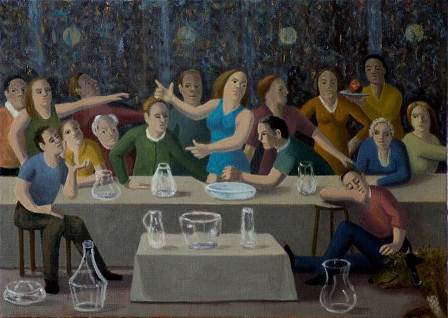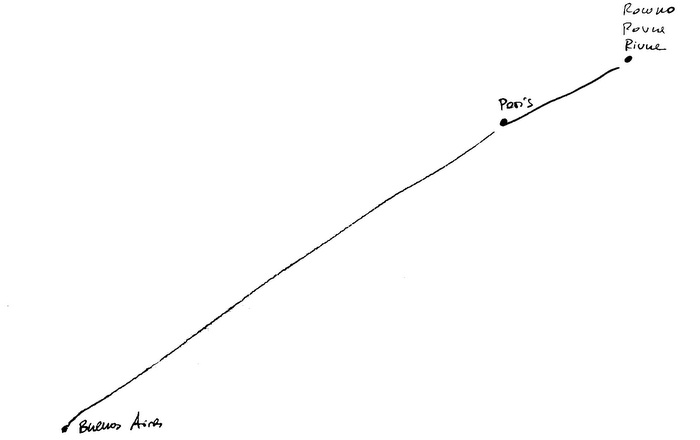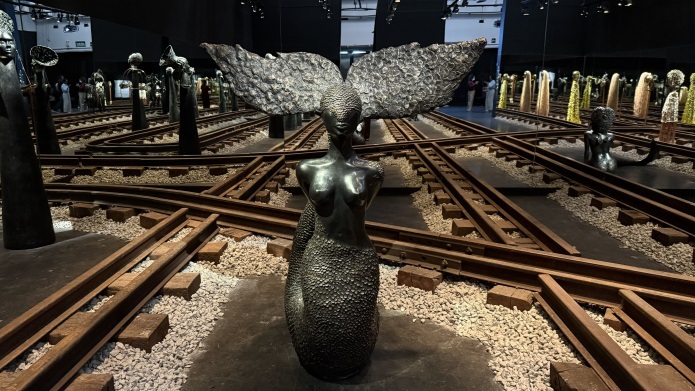Stephen McKenna exhibits her work for the third time at the Estampa Gallery. The first and second one celebrated in 1990 and 1992 allowed us to know her drawings and watercolors in Spain. This one is an anthology indispensable for those collectors interested in the most important classicist English painter.
Mckenna gained international fame in the 80’s. His paintings in oil rebuilding the Greco-Roman antiquity had well acceptance among the critic (including his still remembered cover of the Artforum magazine) and provided him unforgettable solo exhibitions in the main museums if Europe and the United States.
Recalling the chronology of these artistic quotes, we refer to some keys related to the aesthetic evolution of our artist:
With his participation in the Documenta 7, in the individual exhibitions at the Museum of Modern Art of Oxford, in 1983L; in the Stadtische Kunsthalle of Dusseldorf, in 1986; in the “Espíritu Clásico” mytical exhibition at the Museum of Modern Art of San Francisco, in “Cae la Sombra” at the Hayward Gallery of Londres, in 1986; and in the famous “Avant Garde de los años 80” at the Los Angeles County Museum of Modern Art, in 1987. Stephen Mc Kenna marked a time regarding to Bourdieu for his paintings related to his reinterpretation of classical subjects, his manner of quoting Chirico, Bonnard or Dalí, his paintings inside paintings, the architectonical use of color and his unmistakable bet for the beauty as sense of the art made him won the pioneer in postmodern art title. Time proved that Mackenna is a lover of the classic beauty beyond stylistic etiquettes.
Mackenna was nominated to the Turner Award in 1986 after painting for two years in Pompeya an amazing series of 6 paintings in which the theme related to the lived ruin appears expressed from the natural: the painting inside the picture is no longer created just as an intellectual game but a pleasant and daily ritual. The Estampa Gallery provides us the painter who understands the practice of art as a contagious pleasure. Each picture is a quiet delight and comfortable, a deliciousness of good life.
In the 90’s, the pictorial references to the classical antiquity put one foot to a sophisticated exploration related to the perdurable value of the genders devoted to the still life, the interior, he landscape and the marine. The matters related to the birds that are present in this exhibition prove his mastery. The painting on cities is a key in the art of McKenna. He installed his residence in the metropolis he turns into his leif motiv and from his studio, starting from the windows he sees on his trestle, the urban landscape is created. The city turns into light, an horizon line and cultural tradition that our artist reflects as a laying princess.
Corot, Derain, Magritte appear like encounters and not only as cultured references; likewise Cezanne tended to paint like Poussin from the natural, McKenna finds Morandi along with Orvieto, from his terrace in Villa Palomparo, ,Corot in his residence in the Roman trastevere, Derain in his Florentine castigion, Magritte in his Terni village in Umbria. He faced Donegal, his Irish residence in the river Barrow to classic landscape painter Aelbert Cuyp and for his bucolic pictures, he finds in the high lands his personal view of the Arcadia.
In 1997, Mackenna curated the exhibition titled En busca de la pintura at the Irish Museum of Modern Ar. His work as a curator show us his intellectual depth and his inevitable attitude to the painting he defines as a golden bridge between the past and future. Mckenna became a prophet in his land. His works are part of the collection of the Tate, the British Council, the Imperial Museum of the War in London, and the Irish Museum of Modern Art in Dublin. His erudite work in defense of aesthetic classism made him a member of the Irish Royal Academy.
This exhibition at the Estampa gallery allow us to get works of McKenna from the same period of those you find in the collections of the Berlinische Galerie, the Museum of Fine Arts of Belgica in Bruselas or the Museum Fries de Leeuwarden in the Netherlands or those exhibited in the mythical exhibition “Sueños y tradiciones” at the Smithsonian Institute in Washington.
Stephen McKenna has stated that when he paints an Apple, he does not only paints his rounded form and the intense beauty of its red color but only paints the temptation of Adan and Eva. He also paints the Judgment of Paris. This exhibition give us the unique possibility to live with a genuine classic painter.
ESTAMPA GALLERY
Justiniano, 6. 28004 Madrid
(From April 7 to May, 2015)















